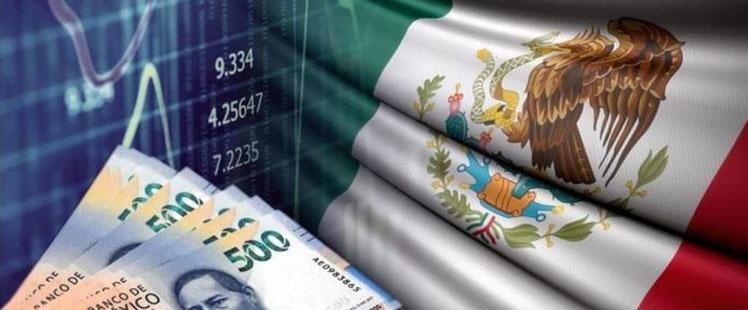
3 minute read
RELEVANT NEWS
This dynamism contrasted with the falls in the same indicator of the other two main U.S. trading partners: sales from Canada were 35,111 million dollars, a reduction of 14.5%, and those from China totaled 34,334 million dollars, a decrease of 29.3%, year over year.
From around the globe, in descending order of importance, the top foreign purchases by Americans are oil, cars, telephones, computers, and medicines.
Advertisement
Total product imports to the United States totaled 258.114 billion dollars in June, a 9.8% year-over-year drop.
In the opposite direction, U.S. foreign sales are dominated, also in decreasing order, by petroleum oils (except crude oil), crude oil, gas, autos, and integrated electronic circuits.
U.S. exports to Canada were $31.196 billion last June (-5.2% year-on-year), followed by those shipped to Mexico for $27.389 billion (-5%) and to China for $10.223 billion (-11.4 percent).
Globally, U.S. exports stood at $167.232 billion in June, down 8.4% from the same month in 2022.
With these results, Mexico ranked as the United States’ leading trading partner in June, with a 16.1% share, followed by Canada (15.6%) and China (10.5%).
And in terms of the largest suppliers of goods to the United States, Mexico was also in the lead in that month, with 15.9%, ahead of Canada (13.6%) and China (13.3%).
Mexico’s economy grew at a surprising pace in the first half of 2023, improving projections for Mexican gross domestic product (GDP) for 2023 to align with official estimates, while the relocation of companies to the country thanks to nearshoring boosts the favorable outlook of private analysts.
Among other factors, the improvement in the outlook for the Mexican economy is also due to a healthier U.S. economy, which is keeping away the possibility of a recession and its impact on Mexico, being its main trading partner, which is a favorable factor for exports and historical remittances to the country month after month.
Also noteworthy is the investment in infrastructure projects by the Mexican Government, which now makes visible the benefits in construction and public spending, mainly in the south of the country, such as the Olmeca refinery in Tabasco; the Mayan Train in the Yucatan Peninsula and the Tulum Airport in Quintana Roo, among other works considered as “priority”.
According to official figures from the National Institute of Statistics and Geography (Inegi), Mexico’s GDP increased by 3.6% in the first six months of the year, while the Ministry of Finance and Public Credit has estimated an annual growth rate of 2.3% in 2023.

For Bank of America Securities (BofA), this figure surprised the market by presenting the most favorable dynamics of the economic group of 20 (G20), excluding China, India and Indonesia.
This caused the organization to raise its forecast for the Mexican economy to 3.2% at the end of the year, from a previous 2.3%, considering that “Mexico has had a good run so far”.
Relevant News
“Mexico’s economic activity has grown 3.5% or more for four consecutive quarters, well above its average growth rate of 2.5%,” it added.
In addition, the Bank of Mexico’s July monthly survey indicates that private sector specialists raised the growth estimate for the country in 2023 to 2.6%, while the consensus of the “Citibanamex Expectations Survey”, answered by 33 financial analysis groups, also raised its outlook to 2.7%.
Some financial groups such as Ve por Mas (Bx+) also improved their projection for the end of the year from 2.8% to 3%, as well as Invex, which foresaw an increase in GDP at the end of the fourth quarter of the year of 2.8%, from 2%, both more in line with official forecasts; while the International Monetary Fund also improved its forecast to 2.6% this year, from a previously estimated 1.9%.
Another factor considered by the Bank of America is that investment is recovering at an accelerated pace, after a long period of weakness, “driven mainly by proximity investments.”
However, he noted that the level of investment is only 3% higher than it was a decade ago, highlighting the injection of capital into machinery and equipment as a major factor in the nearshoring phenomenon.
Better Perspectives For Nearshoring
According to data from the Mexican Ministry of Economy, in the first half of 2023, Mexican businessmen have made 174 investment announcements, for more than 64,504 million dollars, while maintaining that the country “is in an ideal moment to receive investments”.
During the first quarter of 2023, the Mexican agency registered a direct foreign investment of 18,636 million dollars, an amount 48% higher than the annual rate.
According to BofA, Mexico is already observing the effects of nearshoring due to the increase in the volume of investments and the benefits to the labor market with the creation of more jobs, with a streak of monthly gains during the year until the slowdown last July.
According to the most recent “Zoom Nearshoring” document from Santander Bank, the northern region of Mexico concentrates the best opportunities for the relocation of companies, with Chihuahua, Coahuila, Baja California, Tamaulipas, and Aguascalientes as the main entities with the best infrastructure and logistics.
Meanwhile, an estimate by the Global Business Council (Ceeg) estimates that Mexico could increase its GDP by up to 2.5% in the next six years due to nearshoring and reach foreign direct investment (FDI) levels of up to 50 billion dollars.
For the country’s industrialists, this phenomenon represents an opportunity to grow the country’s economy at a sustained 4% in the coming years, according to Eduardo Ramirez, treasurer of the Confederation of Industrial Chambers (Concamin).






